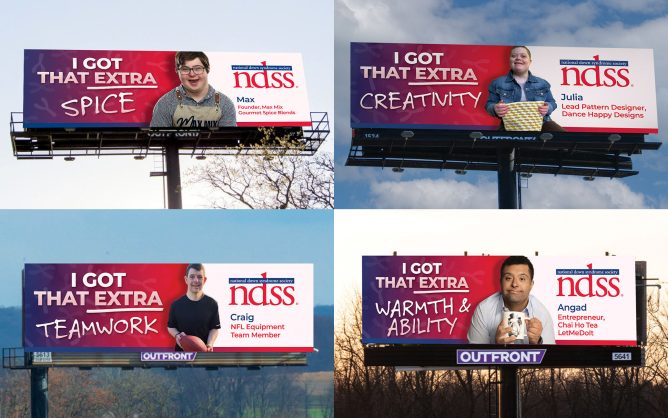This interview with Stephanie Cadieux, chief accessibility officer for the Government of Canada, is part of a ‘Five minutes’ series featuring speakers from AccelerateGOV, taking place in Ottawa on 21 October.
Stephanie will take part in a panel session on making government services accessible, frictionless and usable for all.
What are you most excited about sharing at this year’s AccelerateGOV conference?
I’m interested to explore the possibilities presented by the intersection of AI and accessibility, but also to challenge people’s thinking and biases about people with disabilities and what inclusion looks like.
What have you achieved in your career that you’re most proud of?
I was the first woman with a visible disability elected as a member of the legislature in British Columbia, and I was also the first appointee as chief accessibility officer of Canada. I’m particularly proud of these firsts, because I know both made a difference for others and set an example of what is possible.
What do you like most about working in the civil service?
I enjoy the opportunity to work on such a wide variety of different issues, programmes, policies and mandates that impact people all across the country, and to get to work in different regions, from coast to coast to coast, getting to benefit from a wide variety of perspectives and approaches to similar challenges.
And what do you dislike about it?
The culture is totally risk averse. There’s a tendency to do things the way they have always been done and to cling to policy, even when that policy is clearly outdated. That puts us behind – both in our ability to act quickly and be responsive to emerging issues, preventing them from escalating. Unfortunately, it also means we lag the rest of the world when it comes to fostering innovation, whether that be in the public service or other sectors that need federal support to do something innovative and scale up.
If you could introduce one civil service reform, what would it be?
I think I would push for a rethinking or reconsidering of policy around educational and language requirements for public service. There’s a need to update there, to reflect the diversity of the Canadian population. For example, English or French may not be the first language learned for many, and there are also disability inclusion considerations, because not everyone can learn or “speak” a second language: sign language may be the first language learned, or an Indigenous language. I also think it is possible that current post-secondary educational requirements hold back many talented people. There often isn’t an opportunity to consider capacity and skills in other ways, so that is a barrier to talent that may want to join the federal public service.
How might the civil service be different in 25 years’ time?
I think the civil service will be more digitised, there will be more use of artificial intelligence (AI), and because of that, it may be leaner. That said, as AI comes into use, it will be important to keep accessibility top of mind. Accessibility often gets forgotten when new technologies first come in, but if it is taken into account from the get-go, there are major opportunities for innovation and empowering a diverse workforce presented by the combination of AI and accessibility. So I think that while the potential reach of the civil service will increase, the capacity and talent to do deep, forward policy thinking may shrink unless that is guarded against. The ripple effects of becoming a more hybrid and remote workforce will continue, so we will have to place a focus on creating quality and enduring relationships, because those have already suffered some negative effects over the past few years. It will be essential that we learn new ways to foster shared values, resilience, collaboration and belonging.
Which country’s civil service or which government department or agency are you most inspired by and why?
I’ve been inspired by different facets of different civil services from around the world. I think what inspires me the most is that very diversity. I’m a strong believer in international collaboration, because we all stand to learn from each other, serve as role models and share best practices. That’s how we can best move forward as a global collective with shared values and challenges.
Can you name one lesson or idea from abroad that’s helped you and your colleagues?
There have been many, but when it comes to employment for people with disabilities, the example of a McDonald’s I visited in Vienna always comes to mind. The owner decided they would prioritise hiring people with disabilities and took action to remove barriers. This included training in sign language for all employees. The workplace culture they’ve created as a result is exceptional, and the takeaway really was that once they decided they were going to do this, the solutions presented themselves – so if an employer isn’t making accessibility a priority because of misconceptions, I often discuss this example.
Are there any projects or innovations in your country that might be valuable to your peers overseas?
The Accessible Canada Act (ACA) is a powerful piece of legislation that I think can serve as a model for many other nations. It is certainly being studied. One of the things that makes it unique is that it uses the social model of disability, which makes it clear that disability exists only in connection with the barriers placed in a person’s way by the system. So the onus is on the system to remove those. The ACA also makes it obligatory to consult people with disabilities throughout any processes that have an impact on them. That’s key to ensuring that as policy evolves, it will continue to work well in practice. Finally, it is worth mentioning that Canada is one of the only countries to have a chief accessibility officer keeping track of how things are progressing from a high level. That’s something I would encourage governments and large organisations in the private sector to adopt.
Which three famous people, alive or dead, would you most like to invite to a dinner party?
I would invite Margaret Thatcher, Michelle Obama and Jacinda Ardern because I think there is much to learn about women in leadership, and leadership in general, from different generations, countries and philosophies.
If you weren’t a civil servant, what would you be?
I would be an entrepreneur, 100%, without a doubt. I was once already.
What was your first car?
A Pontiac Fiero, black with a purple pinstripe.
Stephanie will be joined on the panel by Martin Boucher, director of government digital communications for the Government of Québec; Clara Morgan, director of the Office of Public Service Accessibility, Treasury Board of Canada Secretariat; Dino Zuppa, acting CEO, Accessibility Standards Canada; and Jonathan Finch (invited), director, digital experience, Office of Management and Budget, United States.
Source: globalgovernmentforum




